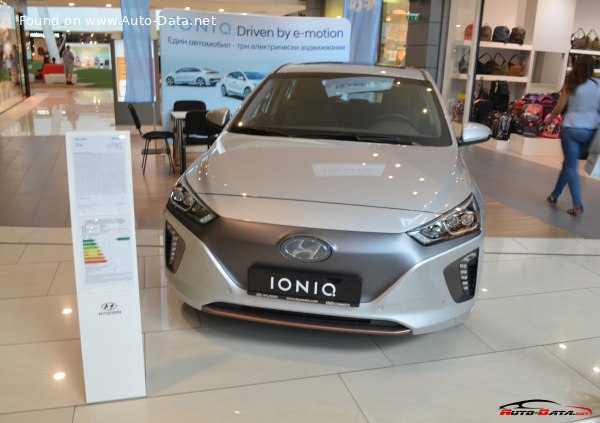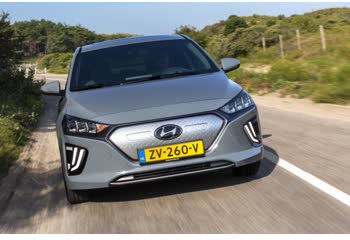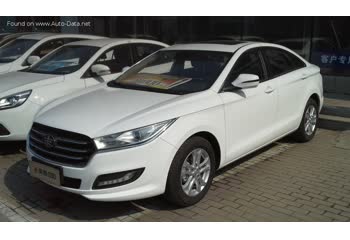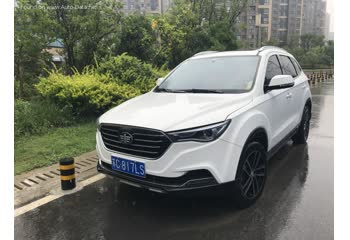Everything you need to know about specifications and performance - Hyundai IONIQ IONIQ 2016 - 1.6 GDI (141 Hp) Hybrid DCT

Overview:
What is the engine capacity of a Hyundai IONIQ 2016?
The engine capacity of the Hyundai IONIQ 2016 is 1580 cm.
Hyundai IONIQ 2016 How many horsepower?
The engine power of the Hyundai IONIQ 2016 is 105 Hp @ 5700 rpm..
How powerful is the electrical system in the Hyundai IONIQ 2016?
The power of the electrical system in the Hyundai IONIQ 2016 is 141 Hp @ 5700 rpm. hp.
How much gasoline does a Hyundai IONIQ 2016 consume?
The Hyundai IONIQ 2016 consumes 3.4 liters of gasoline per 100 km
General:
Brand: Hyundai
Model: IONIQ
Generation: IONIQ
Modification (Engine): 1.6 GDI (141 Hp) Hybrid DCT
Start of production: 2016
End of production: 2019
Powertrain Architecture: FHEV (Full Hybrid Electric Vehicle)
Body type:Liftback
Seats: 5
Doors: 5
Engine:
Power: 105 hp @ 5700 rpm.
Power per litre: 66.5 hp/l
Torque: 147 nm @ 4000 rpm.
Engine displacement: 1580 cm
Number of cylinders: 4
Engine configuration: Inline
Number of valves per cylinder: 4
Fuel injection system: Direct injection
Engine aspiration: Naturally aspirated Engine
Valvetrain: DOHC, D-CVVT
Engine oil capacity: 3.8 l
Coolant: 6.7 l
Engine layout: Front, Transverse
Cylinder Bore: 72 mm
Piston Stroke: 97 mm
Compression ratio: 13
Performance:
Fuel Type: Petrol (Gasoline)
Fuel consumption (economy) - urban: 3.4 l/100 km
Fuel consumption (economy) - extra urban: 3.6 l/100 km
Fuel consumption (economy) - combined: 3.4 l/100 km
Emission standard: Euro 6
Acceleration 0 - 100 km/h: 10.8 sec
Acceleration 0 - 62 mph: 10.8 sec
Maximum speed: 185 km/h
Weight-to-power ratio: 9.7 kg/Hp, 102.9 Hp/tonne
Weight-to-torque ratio: 5.2 kg/Nm, 193.4 Nm/tonne
Acceleration 0 - 60 mph: 10.3 sec
Electric system:
Gross battery capacity: 1.56 kWh
Battery technology: Lithium-polymer (LiPo)
System power: 141 hp @ 5700 rpm.
System torque: 265 nm @ 4000 rpm.
Electric motor power: 44 hp
Electric motor Torque: 170 nm
Electric motor type: Synchronous
Space:
Kerb Weight: 1370 kg
Max. weight: 1870 kg
Max load: 500 kg
Trunk (boot) space - maximum: 1505 l
Trunk (boot) space - minimum: 443 l
Fuel tank capacity: 45 l
dimensions:
Length: 4470 mm
Width: 1820 mm
Height: 1450 mm
wheelbase: 2700 mm
Front track: 1563 mm
Rear (Back) track: 1577 mm
Minimum turning circle (turning diameter): 10.6 m
Powertrain, Suspension and Brakes:
Drivetrain Architecture: The Internal combustion Engine (ICE) and electric motor drive the front wheels of the car with the ability to work in full electric or mixed mode.
Drive wheel: Front wheel drive
Number of gears and type of gearbox: 6 gears, automatic transmission DCT
Front brakes: Ventilated discs
Rear brakes: Disc
Assisting systems: ABS (Anti-lock braking system)
Steering type: Steering rack and pinion
Power steering: Electric Steering
Tires size: 195/65 R15; 225/45 R17
Wheel rims size: 6.0J x 15; 7.0J x 17
Front suspension: Independent type McPherson
Rear suspension: Independent multi-link suspension
See also

Last generation.
Its production began in 2019 until Now

Same production year and almost the same engine capacity.
Its production began in 2016 until Now

Same production year and almost the same engine capacity.
Its production began in 2016 until Now
Write a comment